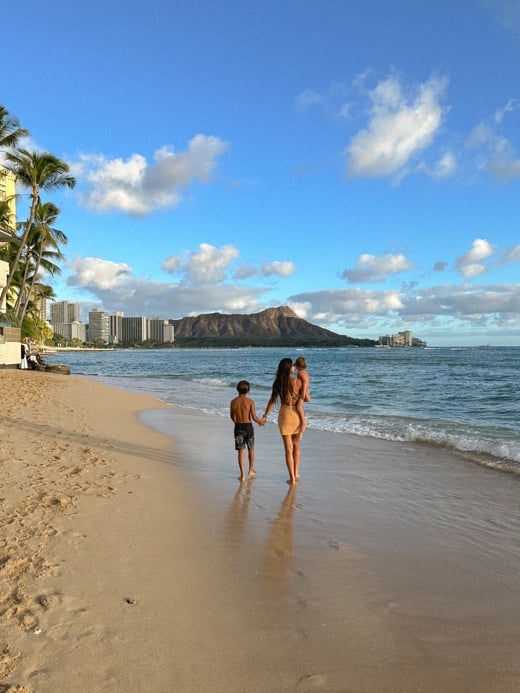언어 선택
통화 선택
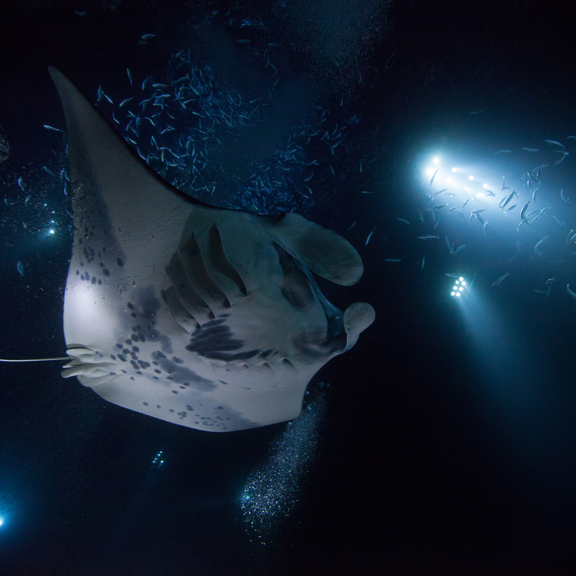
만타 가오리의 마법: '가오리맨' 켈러 라로스(Keller Laros)와의 대화
하와이 빅 아일랜드는 구름 숲 보호구역부터 활화산까지 어드벤처 여행객들이 즐겨 찾는 여행지입니다. 하지만 섬 서쪽 코나 해안에서 즐길 수 있는 가장 멋진 액티비티 중 하나는 바다에서 즐기는 스노클링과 장엄한 쥐가오리와 함께하는 스쿠버 다이빙입니다.
켈러 라로스만큼 이 온화한 생명체에 대해 열정적인 사람은 없습니다. 저명한 환경 보호 운동가인 켈러 라로스와 코나의 쥐가오리, 시민 과학자의 부상, 그리고 점점 더 많은 사람들이 쥐가오리와 함께 어울릴 수 있게 된 것에 대해 이야기를 나눠보았습니다.
"만타 맨"
 켈러 라로스는 코나에서 스쿠버 다이빙을 하던 초기 시절부터 쥐가오리의 매력에 푹 빠졌습니다. 1985 에서 켈러는 전문 다이빙 강사가 되었고 , 이후 14,000 에서 스쿠버 다이빙을 하고 있습니다. 1993 에서 켈러와 현지 스쿠버 투어 운영자 그룹은 다이버와 쥐가오리 모두를 보호하기 위한 안전 지침을 만들었습니다. 주요 규칙은 다음과 같습니다: 관찰만 하세요 - 쥐가오리를 만지지 마세요!
켈러 라로스는 코나에서 스쿠버 다이빙을 하던 초기 시절부터 쥐가오리의 매력에 푹 빠졌습니다. 1985 에서 켈러는 전문 다이빙 강사가 되었고 , 이후 14,000 에서 스쿠버 다이빙을 하고 있습니다. 1993 에서 켈러와 현지 스쿠버 투어 운영자 그룹은 다이버와 쥐가오리 모두를 보호하기 위한 안전 지침을 만들었습니다. 주요 규칙은 다음과 같습니다: 관찰만 하세요 - 쥐가오리를 만지지 마세요!
켈러는 만타 퍼시픽 리서치 재단 ( 2002)을 설립하여 이 아름다운 종과 그들이 서식하는 바다를 보호하고 옹호하는 사명을 더욱 강화했습니다. 만타 퍼시픽은 501(c)3 비영리 단체로, 쥐가오리와 해양 환경에 관한 연구, 교육, 보존을 사명으로 삼고 있습니다.
"켈러는 지금 여기뿐만 아니라 우리와 우리 아이들, 그리고 손주들을 위해 바다를 보호하자는 메시지를 전하고 있다고" 말합니다.
부드러운 거인
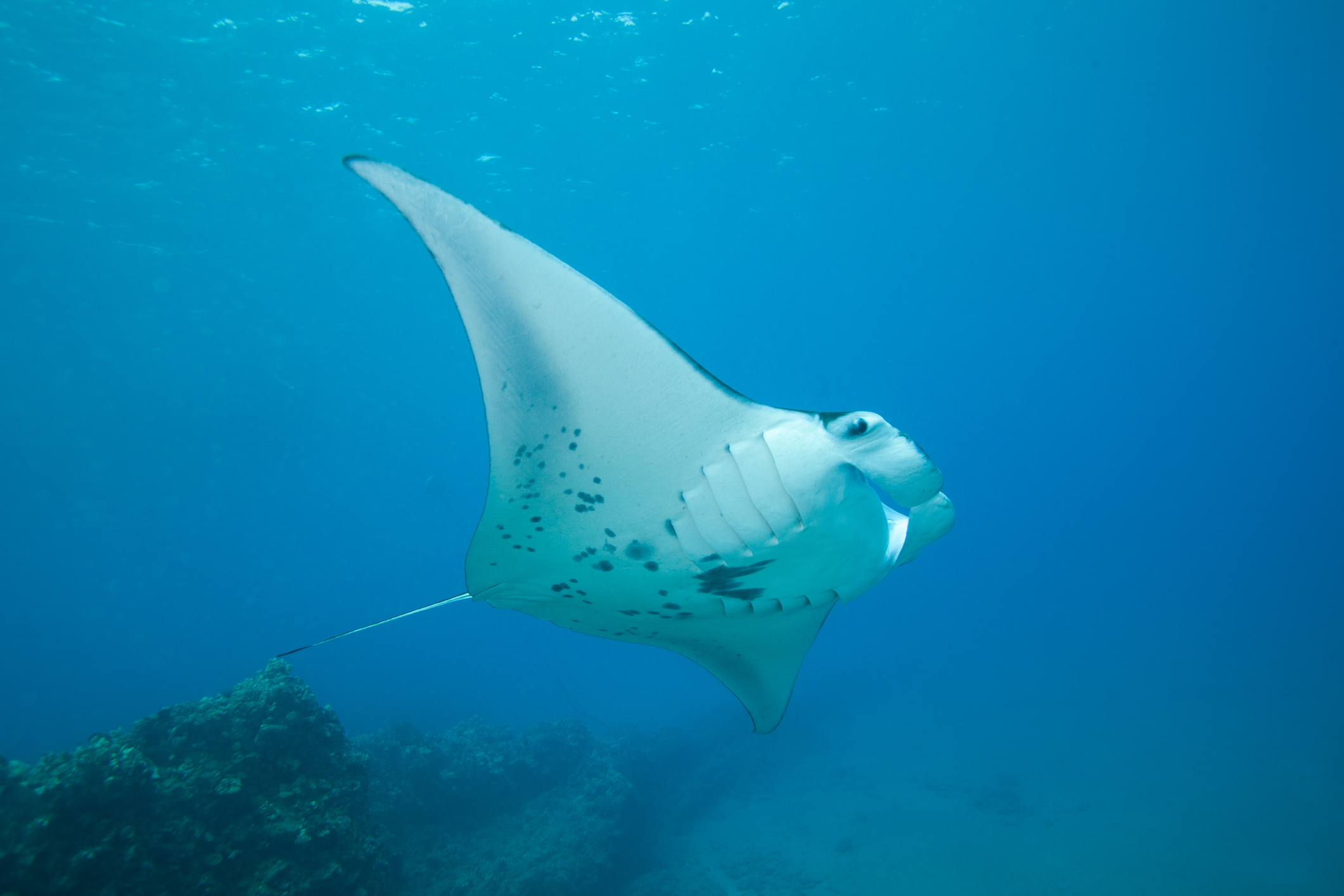
빅 아일랜드 주변의 쥐가오리는 주로 모불라 알프레디(Mobula alfredi)로 알려진 암초 쥐가오리 종입니다. 12 날개 길이가 최대 3미터에 달하는 이 어류는 세계에서 가장 큰 어류 중 하나입니다.
각 쥐가오리는 몸통 밑면에 지문과 비슷한 뚜렷한 반점 무늬가 있는데, 이 무늬는 신원 확인에 사용할 수 있습니다. Manta Pacific은 이 패턴을 사용하여 코나 하와이에서 확인된 개별 쥐가오리의 데이터 베이스( 330 )를 만들었습니다.
만타와 함께하는 야간 수영
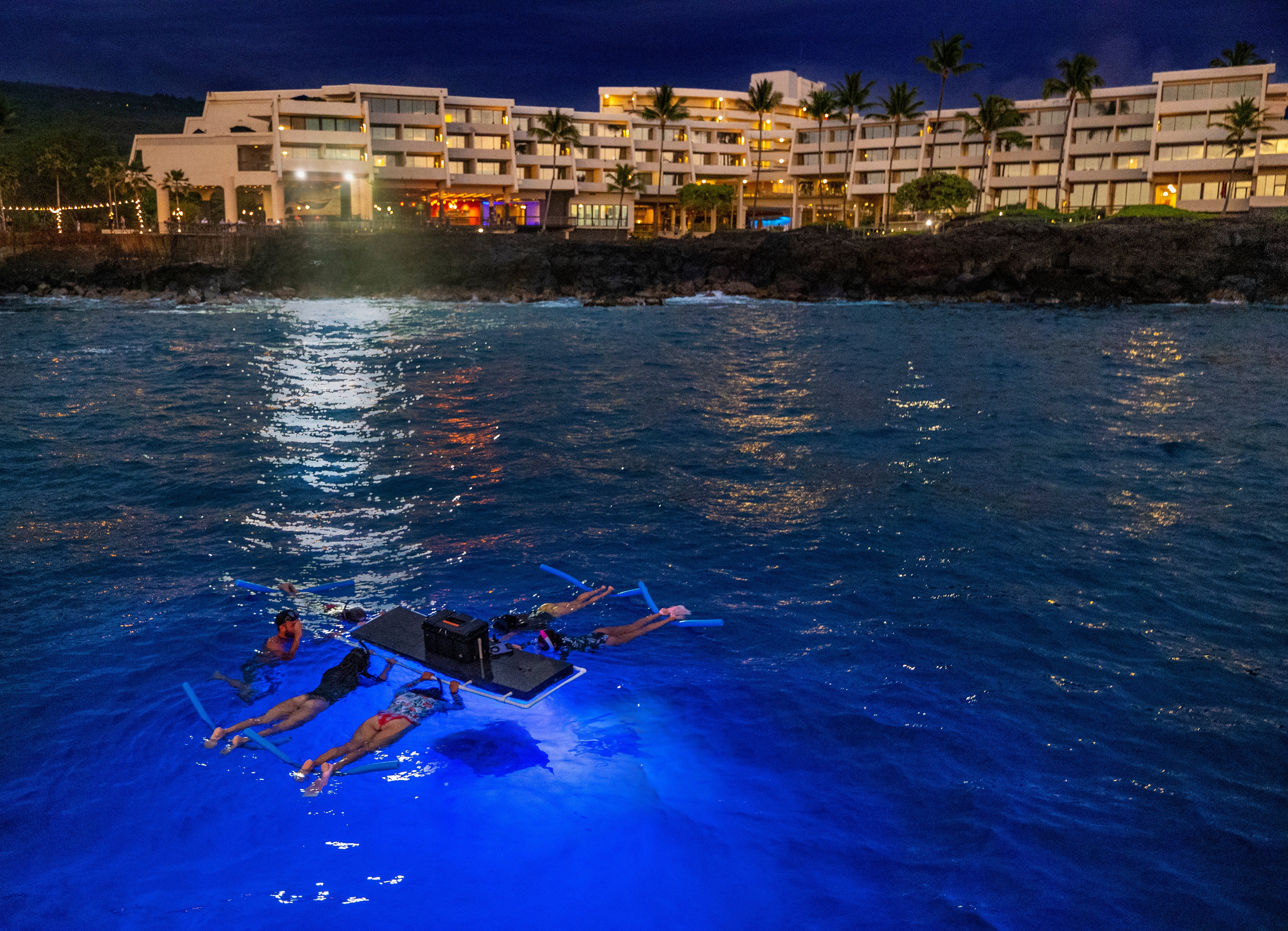
코나 코스트는 쥐가오리를 가까이서 볼 수 있는 세계 최고의 장소 중 하나입니다. 아웃리거 코나 리조트( & 스파) 바로 앞에 있는 코호우 베이에서 바로 그렇게 할 수 있습니다.
플랑크톤을 먹기 위해 수면으로 올라오는 쥐가오리의 움직임을 직접 볼 수 있습니다. 스노클러의 부유 장치가 주변 플랑크톤에 빛을 비추면 근처의 쥐가오리가 그 빛에 이끌려 먹이를 먹기 위해 모여들고, 여러분도 그들과 함께 떠다니는 모습을 볼 수 있습니다.
또한 해질녘에 매일 쥐가오리를 관찰하고 아웃리거의 쥐가오리 학습 센터에서 강연을 통해 쥐가오리의 습성과 서식지, 코나 해안으로 유인하는 요인, 해류가 패턴에 미치는 영향에 대해 알아볼 수 있습니다. 그리고 9월에 열리는 세계 쥐가오리의 날(,16) 2023 에는 현지, 국내 및 국제 전문가들이 쥐가오리와 해양 환경에 대해 발표합니다.
가족 모두가 함께
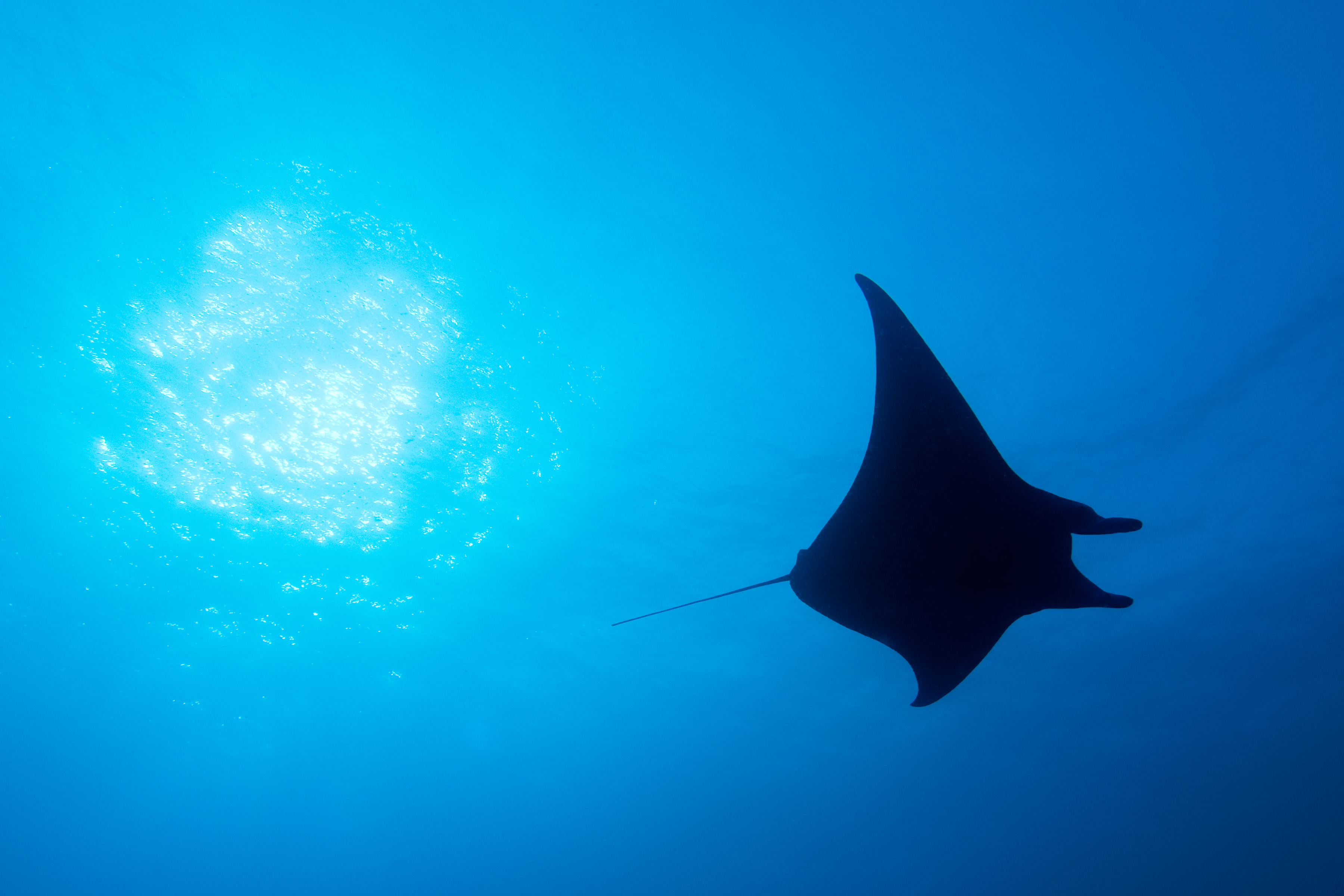
현재 카우후만에는 수백 마리의 쥐가오리가 서식하고 있습니다. 최근 유전자 연구에 따르면 이 수영 실력이 뛰어난 쥐가오리는 하와이의 다른 섬으로 쉽게 이동할 수 있지만, 집 근처에 머물며 섬 사이의 깊은 수로를 가로질러 이동하는 경우는 거의 없으며, 암컷 한 마리가 500 - 1,500 년마다, 수컷 한 마리가 50-150 년마다 섬 그룹 사이를 이동하는 것과 비슷하다고 합니다.
이로 인해 만에서 쥐가오리 "가족" 이 탄생했습니다.
"이제 우리는 조직 생검을 통해 DNA를 분석하여 서로 다른 집단이 얼마나 다른지 또는 가까운지 파악하고 누가 누구와 친척 관계인지 가계도를 작성하기 위한 데이터 포인트를 얻고 있습니다. 이모, 삼촌, 사촌?" 켈러는 말합니다. "세계의 일부 지역에서는 더 많이 여행하지만 하와이 섬 쥐가오리는 이곳에서 어울려 놀아요!"
시민 과학자와 지속가능성
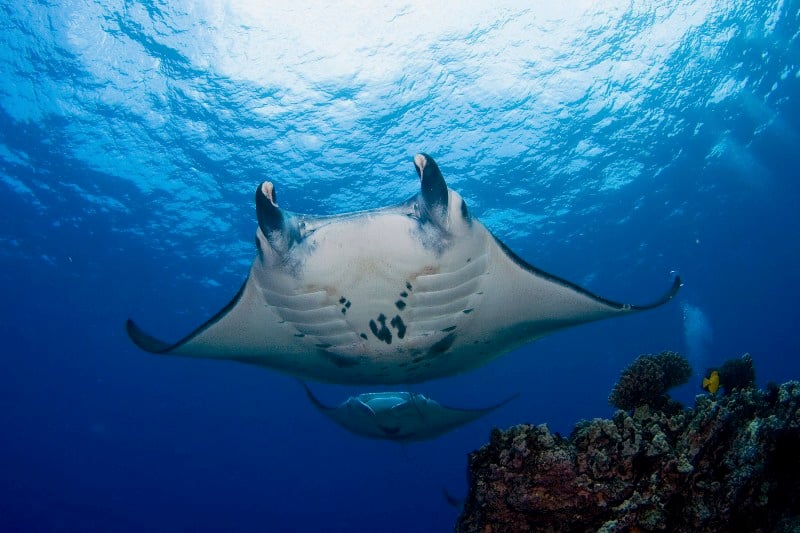 빅 버사, 보 파듀의 사진
빅 버사, 보 파듀의 사진
잘 알려진 만타 중 하나는 빅 버사로 알려져 있습니다. 켈러는 " 1991 에서 처음 버사를 만났을 때 이미 성인이었습니다. 최근에 그녀를 봤는데 같은 크기였어요. 아마 30 또는 40 살일 거예요."
시민들은 코나 코스트 쥐가오리 추적기 앱에 참여하여 목격담과 사진을 공유하고 쥐가오리의 이동 경로를 문의할 수 있으며, 현재 300 이상의 독특한 가오리들이 목록화되어 있습니다.
더 멋진 점은 앞서 언급한 독특한 점무늬를 통해 새로운 쥐가오리를 최초로 발견했다면, 이름을 지어주는 영광을 누릴 수 있다는 점입니다! 켈러의 설명에 따르면, 가장 최근에 시민이 이름을 지은 것 중 하나는 팬데믹 기간에 목격된 것의 이름을 딴 쿼런티나(Quarantina)입니다.
밝은 광선의 미래
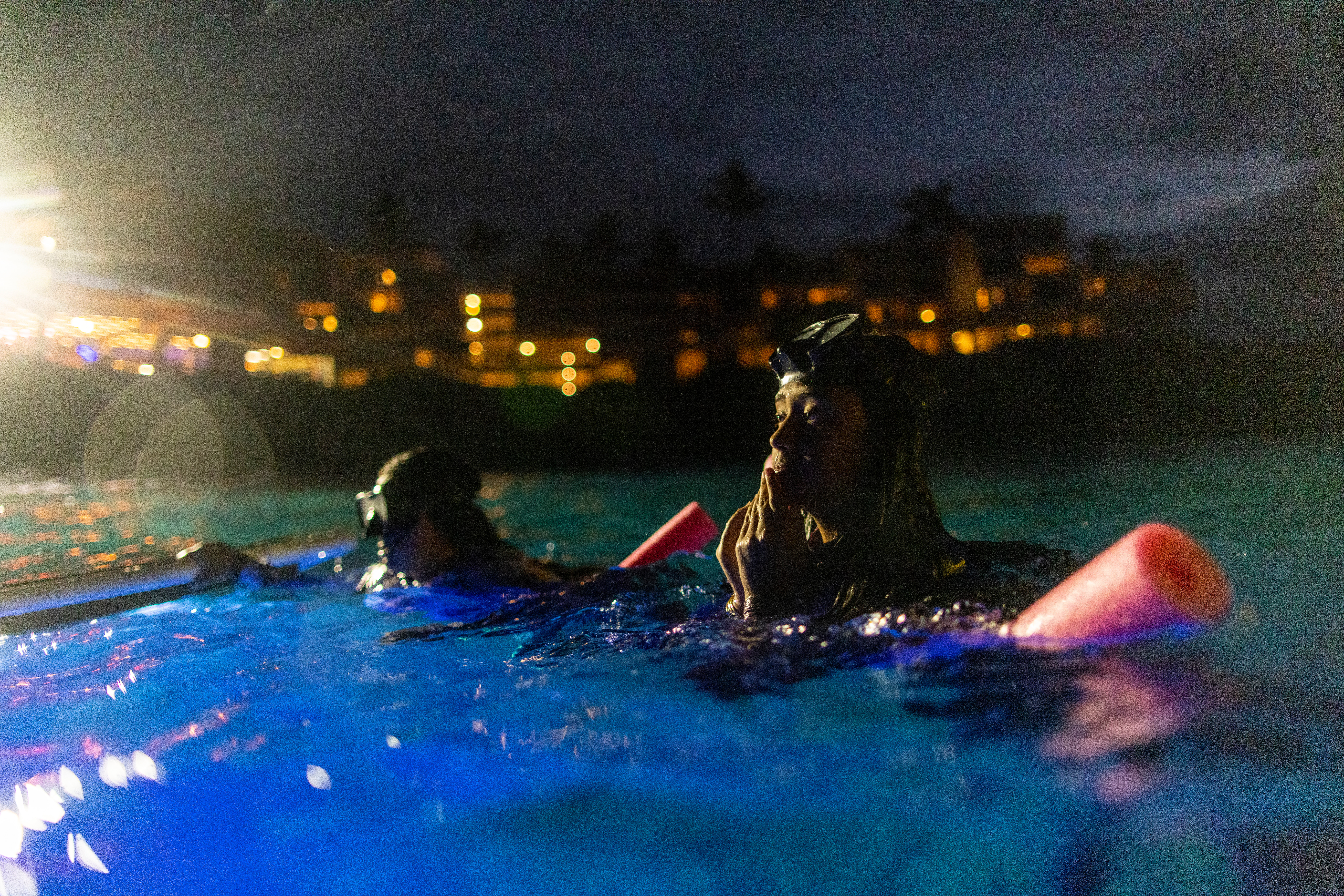
켈러는 물속에서 더 많은 사람들이, 더 많은 고프로와 더 많은 시민 과학자들이 활동하면서 인식도 높아졌다고 말합니다. 쥐가오리는 자연 서식지에서 낚싯줄에 얽히거나 서식지가 파괴되는 등 다양한 문제에 직면하고 있기 때문에 이러한 지원은 매우 중요합니다.
또한 만타 퍼시픽 리서치 재단은 지역 사회, 다이빙 업체, 연구자 및 입법자들과 지속적으로 협력하여 이동을 연구하고 보존 노력을 장려하고 있습니다. 켈러와 그의 동시대 사람들, 그리고 오늘날의 시민 과학자들의 보존에 대한 열정과 헌신 덕분에 하와이의 카우호우 만 쥐가 계속 번성하고 있습니다.
"사람들은 화산과 쥐가오리를 보러 빅아일랜드에 온다고 켈러(" )는 말합니다. "큰 매력이죠. 그렇기 때문에 이들을 돌보고 하와이에서 최고의 경험을 제공하는 것이 매우 중요합니다."
더 많은 참여 방법을 확인하고 코나에 머물며 이 부드러운 바다 거인의 장엄함과 마법을 직접 체험해 보세요.
